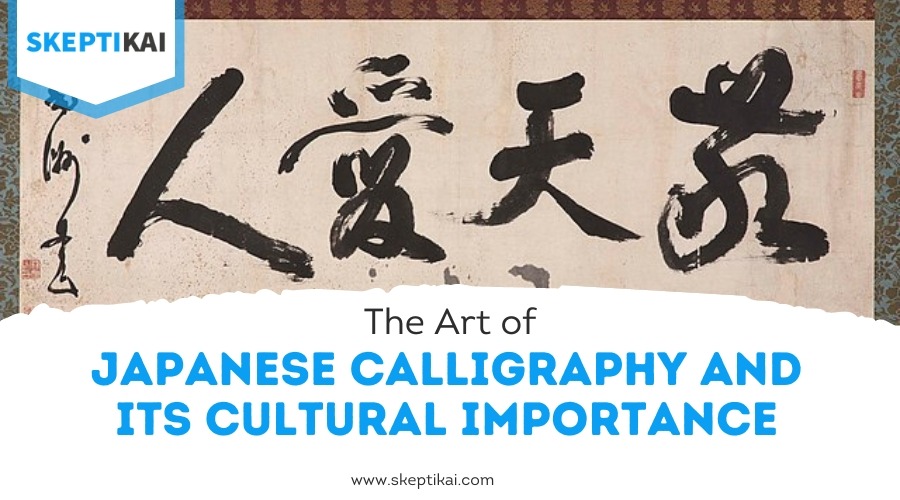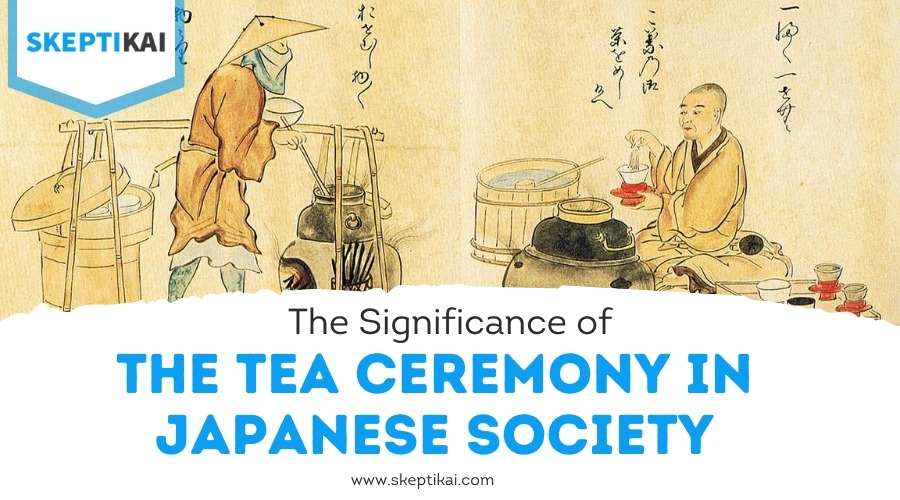How Old Is the Japanese Culture?
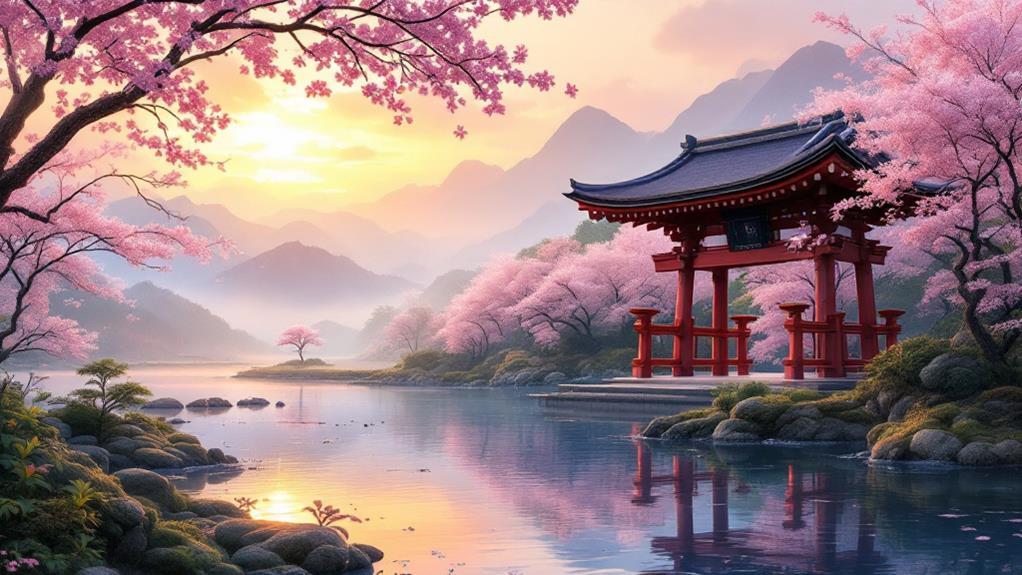
Japanese culture is ancient, tracing its roots back over 16,000 years to the Jomon period. This time is famous for its intricate pottery and the hunter-gatherer lifestyle deeply connected with nature. Over time, Japanese culture has blended indigenous traditions with influences from neighboring China and Korea, adopting Buddhism and Confucian ideas. The cultural heritage continued to evolve through the Heian period's artistic achievements to the samurai's feudal values. Today, traditional and modern elements coexist, impacting global arts and entertainment. If you're curious about how these layers form the rich tapestry of Japanese culture, further insights await you.
Origins of Japanese Culture
The essence of Japanese culture is deeply rooted in its origins, which are a mesmerizing blend of indigenous traditions and foreign influences. As you investigate these roots, you'll uncover how Shinto beliefs and Ainu traditions have shaped the spiritual landscape of Japan. Shintoism, with its reverence for kami, or spirits, has influenced numerous ancient rituals that continue to be practiced today. These rituals often celebrate nature and seasonal changes, reflecting the agricultural practices that have long been central to Japanese life. Furthermore, the Geisha tradition has played an essential role in preserving Japanese arts and culture, evolving from its 18th-century origins to become a symbol of Japan's enduring cultural legacy. You might also find the artistry in early Japanese pottery techniques enthralling. These techniques were not merely functional but also expressive, serving as a canvas for storytelling. Oral storytelling played a significant role in preserving these cultural narratives, passing down legends and history through generations.
Alongside pottery, textile art has a rich history in Japan, symbolizing both aesthetic beauty and cultural significance. The evolution of music in Japan, from ancient court music to modern interpretations, mirrors the dynamic nature of its culture. By understanding these assorted elements, you'll gain insight into the intricate tapestry that forms the origins of Japanese culture, a blend of continuity and innovation.
Jomon Period Insights
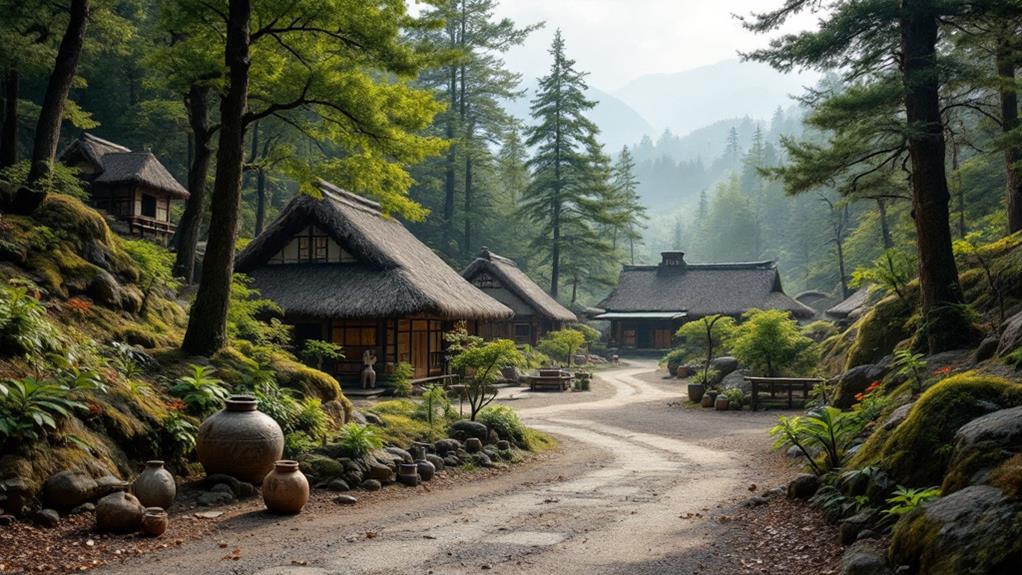
Step into the Jomon Period, a fascinating epoch that spans from approximately 14,000 BCE to 300 BCE, where you'll uncover the foundation of Japan's prehistoric culture. This era is renowned for its Jomon pottery, some of the oldest in the world. These intricate clay vessels were not just utilitarian but also served as a canvas for early Jomon art, showcasing the creativity and innovation of the people. The harmonious relationship with nature established during this timeframe echoes through Japanese educational principles, emphasizing respect and integration with the environment. You'll find that the Jomon lifestyle was deeply connected to nature. They were hunter-gatherers, relying on the abundant resources around them. Their diet included fish, nuts, and wild plants, which they skillfully gathered and hunted. This harmonious relationship with the environment is a cornerstone of their culture.
Dive deeper into Jomon spirituality, which was rich and complex. The Jomon people created clay figurines, known as dogu, believed to have spiritual significance. These artifacts suggest a belief system that revered nature and the mysteries of life.
Influences From China and Korea
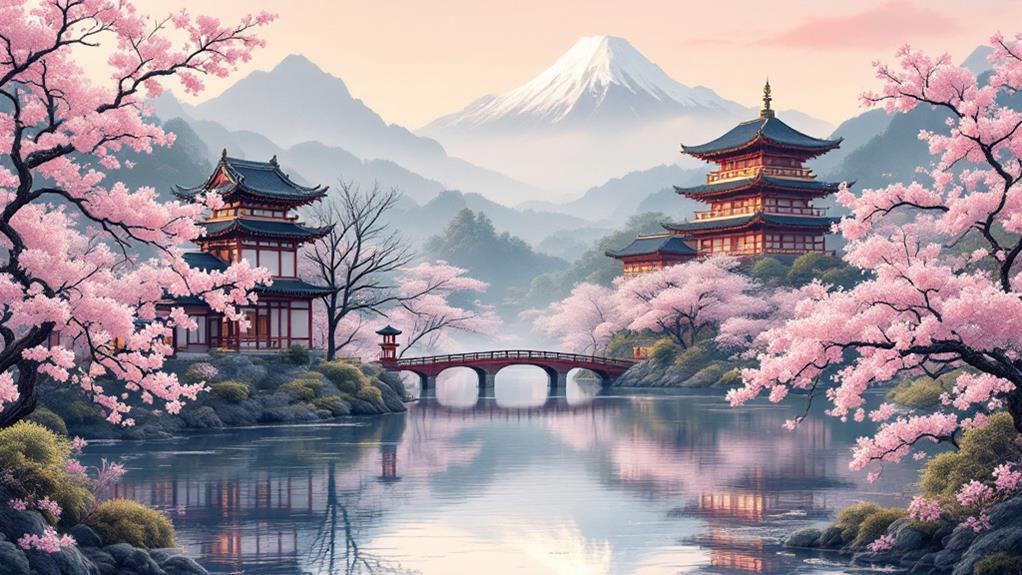
Frequently overlooked yet profoundly significant, the influences from China and Korea have shaped Japan's cultural and historical trajectory. As you investigate Japan's past, you'll find that Buddhist influence from these neighboring countries enriched spiritual life, offering new beliefs and practices. Buddhism, introduced through Korea, opened doors to Chinese philosophy, which deeply penetrated Japanese society. Confucian ideals from China provided moral and ethical guidelines, influencing everything from governance to family life.
Moreover, Korean art played a key role in shaping Japan's aesthetic sensibilities. The intricate designs and techniques brought over from Korea enriched Japanese craftsmanship, leaving a lasting impact on pottery, sculpture, and painting. In addition, Chinese philosophy did more than influence thought; it also affected the language exchange between these countries. Kanji characters, integrated into the Japanese writing system, transformed communication and literature.
Trade relations were another critical aspect that connected Japan with China and Korea. Through these exchanges, not only goods but also ideas flowed across borders, fostering a lively cultural exchange. By understanding these influences, you'll gain a clearer picture of how Japan's rich tapestry of culture was woven, setting the foundation for its future growth and development.
The Heian Period's Impact

Imagine a golden age where art, poetry, and court life flourished, and you'll find yourself in the Heian period of Japan. This period, spanning from 794 to 1185, is a cornerstone of Japanese culture. Heian aesthetics emphasized elegance and refinement, with artistic expressions becoming central to court life. You'd witness the evolution of literature, as this period birthed iconic works like "The Tale of Genji" by Murasaki Shikibu, which remains influential today. Poetry thrived, with courtly competitions showcasing the age's literary prowess.
In the Heian period, court life was the epicenter of cultural development. Social hierarchy played a significant role, dictating interactions and cultural exchanges among aristocrats. The elite indulged in artistic endeavors, from calligraphy to painting, which were crucial to their status and identity. You'd notice how cultural exchanges with China previously introduced new ideas that the Japanese adapted to form their own unique identity during this time.
Heian aesthetics permeated daily life, from clothing to architecture, creating a distinct cultural legacy. As you investigate this period, you'll see how the Heian age's impact laid the groundwork for future cultural developments, influencing Japan's artistic and literary traditions for centuries to come.
Samurai and Feudal Japan

As the Heian period gave way to new societal structures, the emergence of the samurai class marked the beginning of feudal Japan. You'd find that the samurai weren't just warriors; they embodied a complex way of life, known as the warrior lifestyle. At the heart of this lifestyle was the samurai code, a set of bushido principles that emphasized honor, courage, and loyalty. These values weren't merely abstract ideals; they guided every aspect of a samurai's life, shaping their actions on and off the battlefield.
The feudal hierarchy dictated much of Japan's social structure, where samurai pledged their clan loyalty to powerful lords, known as daimyo. This loyalty was central to maintaining the honor culture that pervaded samurai society. In return, samurai were granted land and status, essential for sustaining their warrior lifestyle.
When you picture a samurai, you might envision their iconic samurai armor, designed not just for protection but also to signify their status and allegiance. Their battle tactics were sophisticated, blending martial skill with strategic acumen. Each encounter was not just a test of strength but a reflection of their adherence to the bushido principles.
Modern Cultural Reflections
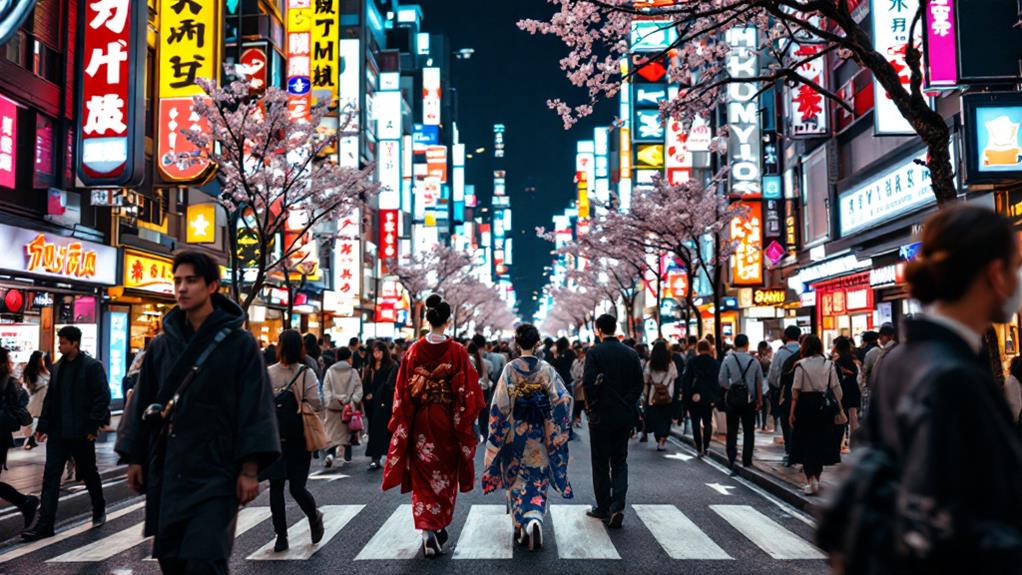
In the present-day Japan, echoes of the samurai's influence are visible in numerous aspects of modern culture, from popular media to everyday values. You can see this in the discipline and honor that still permeate Japanese society, often highlighted in pop culture. Anime, with its global reach, frequently draws on these themes, ensuring the past remains lively in digital media.
Culinary traditions also reflect a harmonious blend of old and new. While you'll find ancient recipes being honored, there's an exciting fusion with international flavors, catering to an evolving urban lifestyle. In fashion trends, traditional garments like the kimono are being reimagined, creating a bridge between historical elegance and modern chic.
Contemporary art in Japan is another indication of this cultural evolution. Artists incorporate classic techniques while experimenting with cutting-edge forms and materials. Music evolution follows a similar path, where traditional instruments meet state-of-the-art technology, producing unique sounds that captivate global audiences.
In traversing the bustle of city life, you witness how deeply ingrained these cultural reflections are. They shape not only Japan's identity but also its influence on the world stage, linking the past with an ever-progressing future.

